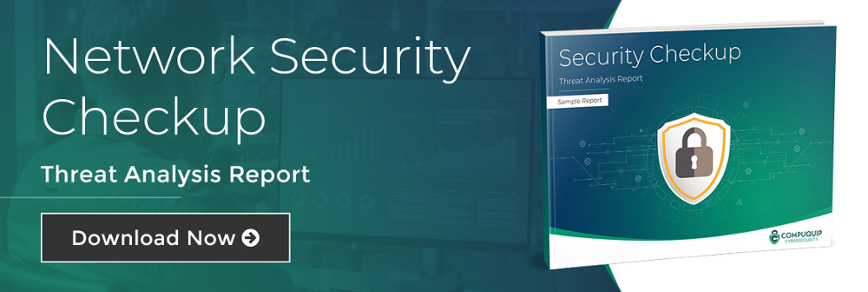Zero Trust Network Access: What It Is & Why You Need It
Remote network security is a major priority for today’s organizations as they continue to manage the risks of having so many employees working from home. While virtual private networks have long been a preferred solution for remote access, today’s threat environment is much more complex, involving more endpoints and threat vectors than ever before. Zero trust network access offers an ideal solution for organizations looking to increase their security posture and keep their critical assets secure in a remote working environment.
What is Zero Trust Network Access?
Zero trust network access (ZTNA) is an innovative approach to network security that leverages public cloud environments to deliver secure access to private applications according to strictly-defined user credentials. It is especially effective when it comes to remote access. In traditional networks, a remote user could enter the network and then move freely within it to access whatever applications or data they wanted once they were verified by the perimeter security protocols. With ZTNA architecture, however, users can only access applications and data they are authorized to use within a separate cloud environment. This protects the network from unauthorized access and ensures that applications and data are never exposed to the public internet.
Any zero-trust architecture operates on a few key security principles:
Never Trust, Always Verify
The core idea underpinning zero trust security is that any device accessing the network at any time could potentially be compromised. Where traditional network security inherently trusts that anything within the network perimeter is authorized to be there, zero trust architecture assumes the opposite. Verification and authentication must be provided every step of the way, which not only ensures that users can only access portions of the network relevant to their responsibilities, but also creates a record of who was in the system, where they went, and what they tried to do while they were there. A zero trust security framework helps to contain security breaches because even if an unauthorized user manages to breach the perimeter, they will not have free lateral movement within the network itself.
Least Privilege Access
Not every user needs to be able to access every part of a network. Zero trust architecture restricts every user’s access privileges to only the data and applications they need to fulfill their job function. These restrictions reduce the risk of human error and prevent compromised credentials from causing widespread damage. A ZTNA approach takes this principle even further by incorporating a number of additional factors into the definition of least privilege access. Context attributes like the user’s current location or the device they’re using can further restrict access to help mitigate risk.
Multi-Factor Authentication
A mainstay of most security protocols, multi-factor authentication requires more than one set of credentials to authorize a user. When it comes to remote networks, this could be a user password and a randomly generated access code delivered via mobile text or email. It could also require that a specific device be used to access the network, completely eliminating the risk that a compromised device could introduce harmful malware into the network.
Micro-Segmentation
The great advantage of ZTNA is the ability to segment users, applications, and data into any number of categories, each one governed by its own security policies. These policies can reflect a variety of business requirements and can be easily adjusted to accommodate changing priorities. This allows companies to develop a far more nuanced security policy when it comes to managing their data and applications.
Limited Exposure
Zero trust framework has been around in various forms for quite some time. What sets ZTNA apart is the way it leverages public cloud environments to allow remote users to connect directly to applications without having to route them through enterprise infrastructure. A ZTNA cloud environment provides an additional layer of security protection while also ensuring that any security breach will be contained within the cloud and can’t spread into the enterprise network. As a cloud-based solution, ZTNA is also scalable and flexible, allowing organizations to adapt quickly to changing access and security needs, such as those imposed by the COVID-19 pandemic.
ZTNA vs VPN
For many years, enterprises have managed remote network access through virtual private networks (VPNs). A VPN is designed to protect the perimeter of a network, only allowing users with the proper credentials to log into the VPN server and then access the connected internal enterprise network. In effect, a VPN functions like a secure tunnel that connects a remote user to the destination network where mission-critical applications and data are stored.
The problem with a VPN, however, is that it’s an “all or nothing” approach to security. If an intruder gains access to VPN credentials, the enterprise network will treat them as a trusted user and allow them to access sensitive data and applications. More importantly, modern enterprise networks rarely consist of single internal networks, and instead connect to a variety of external cloud platforms.
A single point of protection like a VPN is no longer sufficient to protect most businesses from potential threats. That’s why Gartner expects ZTNA to surpass the VPN as the preferred remote security solution for 60% of businesses by 2023. The flexibility and control of ZTNA architecture makes it a far more effective solution when it comes to restricting access and mitigating risk.
Bolstering Your Remote Network Security with Compuquip
With the COVID-19 pandemic continuing to push organizations into remote working environments, network security is more important than ever. Compuquip Cybersecurity has the skills and expertise to help them implement the very latest in remote security solutions like ZTNA. As a remote company itself, Compuquip knows what it takes to keep enterprise networks secure in a rapidly changing threat environment. To find out how our team can help you protect your essential data and applications, contact our team today for a consultation.

